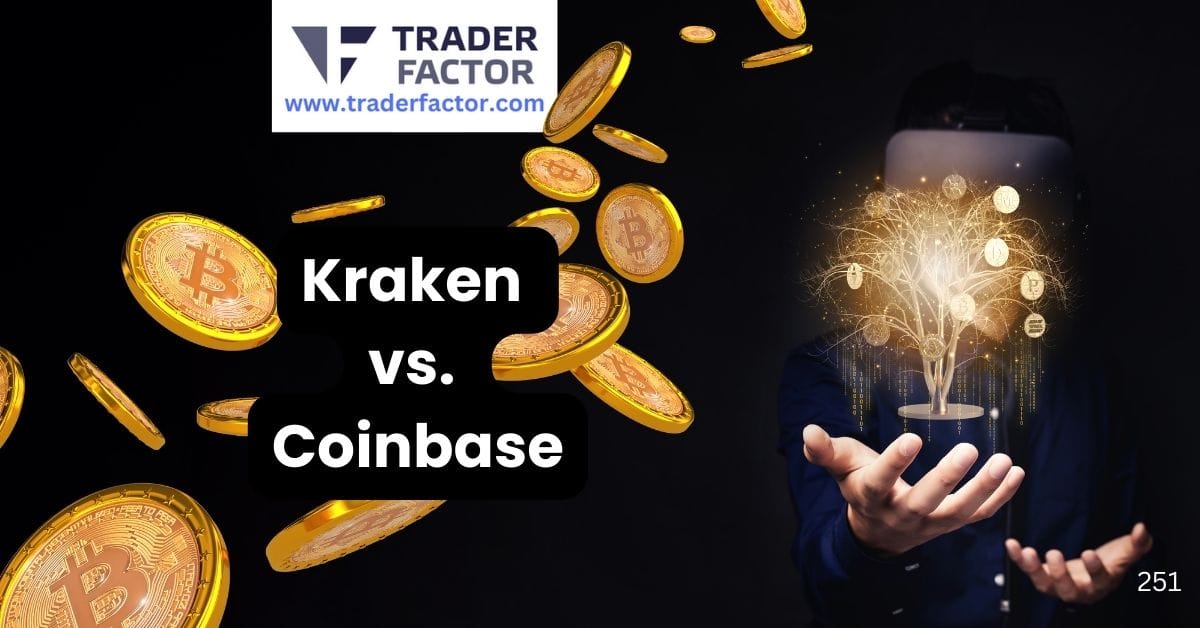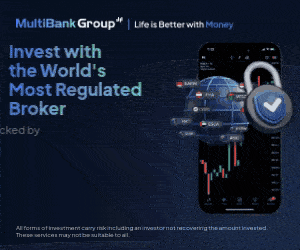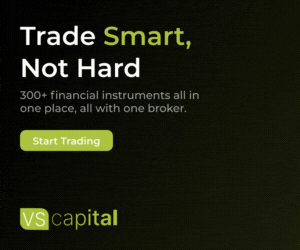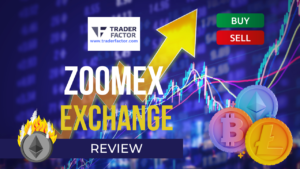When choosing a cryptocurrency exchange, understanding the differences between top platforms like Kraken and Coinbase is crucial. Both are well-established names in the crypto world, but they cater to different needs and experience levels. This article provides an in-depth comparison of Kraken vs Coinbase, focusing on key factors such as fees, trading features, security measures, and overall user experience. Whether you’re a beginner exploring Coinbase’s simplicity or a seasoned trader intrigued by Kraken’s advanced tools, this guide will help you assess which platform aligns with your crypto goals. Read on to make an informed decision about your trading platform.
Table of Contents
ToggleKraken vs. Coinbase: Evaluating the Crypto Contenders
Kraken and Coinbase are leading cryptocurrency exchanges but cater to different user needs. Kraken is known for its advanced trading tools, robust security measures, and lower fees for high-volume traders, making it ideal for experienced users. On the other hand, Coinbase offers a user-friendly interface, strong security, and a variety of beginner-friendly features, though its higher fees and staking costs may deter cost-conscious investors.
Fees
Understanding fees is a fundamental step in evaluating Kraken vs. Coinbase fees. Kraken is known for its competitive rates, making it a popular choice for budget-conscious traders. Its maker-taker fee structure starts at 0.16% for makers and 0.26% for takers, with discounts for higher trading volumes. Withdrawal fees on this platform vary depending on the specific cryptocurrency, which can make Kraken particularly appealing for advanced users and professional traders focused on minimizing costs.
On the other hand, Coinbase fees tend to be higher, particularly for beginners or casual users. Coinbase applies a mix of flat fees and percentage-based charges, depending on the size of the transaction and payment method. However, the Coinbase Pro vs. Kraken trading tools comparison shows a slightly more competitive fee structure once users opt for Coinbase Pro, which also utilizes a maker-taker model. Newcomers may find the ease of use worth the added cost, but experienced traders might view Coinbase’s standard fees as limiting.
Kraken generally offers lower trading fees for high-volume traders, with maker-taker fees decreasing as trading activity increases, while Coinbase charges higher fees initially but provides reductions for large transactions on its advanced tiers. For deposits and withdrawals, both platforms have similar structures, though Coinbase charges more for cash withdrawals via wire transfers. Additionally, Coinbase’s higher staking fees and subscription options make Kraken a more cost-effective choice for users focused on minimizing overall costs.
Fees Summary
| Category | Kraken Fees | Coinbase Fees |
|---|---|---|
| Trading Fees | Maker Fees: – 0.25% (up to $50,000 30-day volume) – 0.02%-0.00% (above $5,000,000+ volume) Taker Fees: – 0.40% (up to $50,000 30-day volume) – 0.12%-0.10% (above $5,000,000+ volume) | Maker Fees: – 0.60% (up to $10,000 30-day volume) – 0.00%-0.05% (above $250M+ volume) Taker Fees: – 1.20% (up to $10,000 30-day volume) – 0.05% (above $250M+ volume) |
| Deposit Fees | Cryptocurrency: Free for most coins Cash (USD): Varies by method, e.g., ACH and wire fees apply | Cryptocurrency: Free for most assets Cash (USD): Free via ACH, $10 for wire transfers |
| Withdrawal Fees | Cryptocurrency: Varies by coin (e.g., BTC $0.0002) Cash (USD): $4 (domestic withdrawals) | Cryptocurrency: Varies by network (e.g., BTC depends on miner fees) Cash (USD): $25 per wire |
| Instant Buy/Sell Fees | Fee + Spread: Approx. 1.5%-2% depending on method Note: Spread depends on market conditions and trade size | Flat Fee: $0.99-$2.99 (transaction size dependent) Spread: Typically 0.50% per transaction |
| Staking Fees | 15% of staking rewards | 25%-35% of staking rewards, depending on the asset |
| Hidden/Additional Fees | “Convert Small Balances:” 3% fee Margin Rollover Fees: Apply for margin traders | Network Fees: Based on blockchain costs Subscription Options: $29.99/month for Coinbase One |
This comparison highlights Kraken’s lower trading fees for high-volume users, while Coinbase appeals to beginners with its simple deposit options and user-friendly interface. Staking and higher withdrawal fees on Coinbase might favor Kraken for cost-conscious users.
Trading Features
Deciding which exchange stands out in terms of trading tools often depends on whether you are a beginner or a more seasoned investor. Kraken is celebrated for its wide array of advanced trading options. These include margin trading, futures contracts, and even staking services for those looking to earn passive income. Supporting over 200 cryptocurrencies, Kraken is an excellent choice for traders who seek portfolio diversification. However, its robust platform can come across as complex and challenging for first-time users.
Coinbase’s user-friendly platform, by contrast, offers a simpler approach to buying, selling, and storing crypto. This makes it a top contender for beginners who want a seamless entry into cryptocurrency trading. With support for approximately 250 digital assets, Coinbase slightly outpaces Kraken in overall cryptocurrency availability in certain regions. The transition from simplicity to advanced options is possible thanks to Coinbase Pro, which provides more tools for serious traders, though it still doesn’t offer the depth of advanced trading features on Kraken.
Security Measures
A secure cryptocurrency exchange is non-negotiable, and both platforms excel in their security practices. Kraken has built a reputation as one of the most secure exchanges available. It employs two-factor authentication (2FA), stores the majority of funds in cold wallets, and uses advanced encryption protocols. Impressively, Kraken has maintained a spotless record, free from major breaches, which adds to its credibility among security-focused users.
Coinbase, as a publicly traded company, is equally committed to safeguarding user assets. It uses similar measures, such as 2FA and cold storage, and also offers insurance for digital currency stored on the exchange. However, its high-profile status in the crypto market has made it a frequent target for cyberattacks. While these attacks are generally repelled, some users may find this an added area of concern when considering Kraken vs. Coinbase security comparisons.
User Experience
The user experience on these platforms is tailored to different types of traders. Kraken is highly regarded for its rich functionalities that appeal to experienced traders, including professionals engaged in high-volume trades or margin trading. Its interface is power-packed but can be daunting for newcomers, resulting in a steeper learning curve.

Conversely, Coinbase is often rated as the best cryptocurrency exchange for beginners, thanks to its clean, intuitive design. First-time traders will appreciate the straightforward process for buying and selling crypto, and its mobile app mirrors this simplicity, making it a breeze to use on the go. However, professional traders may find the standard platform limiting and may need to switch to Coinbase Pro, which still falls short of offering the comprehensive tools available on Kraken.
Kraken vs. Coinbase: Pros and Cons
Kraken
Pros
- Lower trading fees for high-volume traders.
- Advanced trading tools, including margin and futures trading.
- Strong security measures and a reputation for reliability.
Cons
- Interface may feel complex for beginners.
- Limited instant buy/sell features compared to Coinbase.
- Some deposit and withdrawal methods may incur additional costs.
Coinbase
Pros
- User-friendly interface, perfect for beginners.
- Seamless deposit options like free ACH transfers.
- Wide range of features, including staking and a Coinbase One subscription for added perks.
Cons
- Higher trading fees, especially for casual users.
- Significant staking fees (25%–35% of rewards).
- Withdrawal fees for wire transfers are costly compared to Kraken.
Kraken vs. Coinbase: Which is the Best?
Both Kraken and Coinbase are heavyweights in the world of cryptocurrency. Your choice between these platforms will depend largely on your goals and level of experience. Kraken is a standout for security-conscious traders, professionals handling high-volume trades, and those in need of advanced trading features. Meanwhile, Coinbase excels with its user-friendly platform, vast asset support, and seamless onboarding for beginners.
By understanding the Kraken vs. Coinbase fees, exploring their user interfaces, evaluating them as secure cryptocurrency exchanges, and comparing their unique trading tools, you’ll be well-equipped to choose the platform that aligns with your needs. Whether you’re comparing crypto platforms for staking or considering the cheapest crypto exchange for high-volume trades, this guide provides the insights you need to make an informed decision.
Disclaimer:
All information has been prepared by TraderFactor or partners. The information does not contain a record of TraderFactor or partner’s prices or an offer of or solicitation for a transaction in any financial instrument. No representation or warranty is given as to the accuracy or completeness of this information. Any material provided does not have regard to the specific investment objective and financial situation of any person who may read it. Past performance is not a reliable indicator of future performance.















